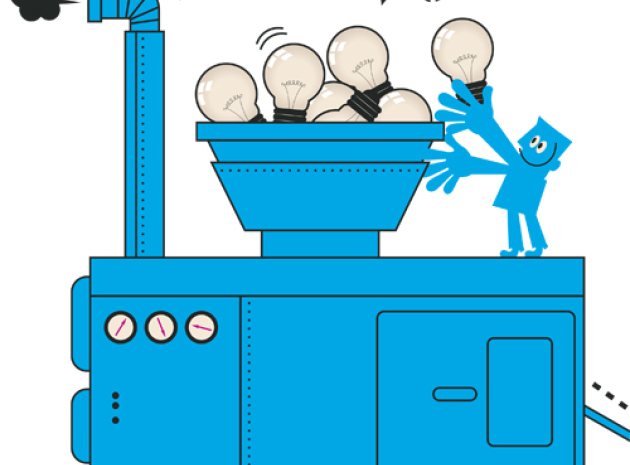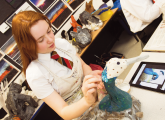Creating a curriculum to support the transition from primary to middle years is no easy feat. I should know; last year, the International Middle Years Curriculum (IMYC), of which I am director, was introduced to schools around the world. Its development goes back several years and came about as a result of the success of Fieldwork Education's International Primary Curriculum (IPC), which is now being used in over 1,500 schools globally. We were being approached by an increasing number of teachers, leaders and parents asking us to extend the IPC approach to learning into Key Stage 3.
Of course it wasn't quite as simple as that and no one expected it to be so. Everyone was fully aware of the massive structural differences between primary and middle or secondary schools, as well as the progressive learning demands required of students at this stage in preparation for KS4 and beyond. But we – and many teachers and leaders that we work with – also knew that there had to be something better for children than the approaches to learning that are currently being used and, in many cases, failing, our middle years students.
Five years ago, when we began the formal research behind the development of the IMYC, we knew we needed to begin with the needs of teenagers. We were lucky; in addition to our own personal experiences, we had many exceptional teachers and parents all over the world that provided anecdotal research. But crucially, we were also in a period of extensive scientific research into the teenage brain. It taught us a lot about what 11 to 14 year olds need and, more importantly, why.
Ch-ch-ch-ch-changes…
This scientific research identified a number of essential alterations in the human brain during adolescence. Combined, these developments make this period the greatest reorganisation in the brain during a human's life, preparing it for adulthood.
Much of the research focused on the thinking part of the adolescent brain: the frontal lobe. This part of the brain is almost adult-size by the age of six. From age six to 12, the frontal lobe develops as more and more connections are made (which is why making relevant links in learning is so important). Then comes a thinning or efficiency stage, beginning in early adolescence and continuing into adulthood, when any excess connections are eliminated in a 'use it or lose it' fashion. This fine-tuning is sculpting the brain into the 'lean, mean machine' of adulthood. Several researchers believe that it is what teenagers do during their adolescent years – in every aspect of their lives, from learning to socialising to eating and sleeping – that affects this fine tuning of the brain.
A question of support
As we worked to identify areas of essential curriculum support for students as they transition from KS2 to KS3, a number of critical needs came to light as a result of this research into the brain:
• Teenagers need help to organise their thinking.
• Teenagers have a need to make sense of who they are, to find relevance for what they are doing, and to make decisions for themselves; but they require support to achieve these needs.
• Teenagers need to take action. In doing so, they are willing to face significant risks in order to achieve a goal.
• Teenagers crave their peers as a result of the transition in their brains and bodies from child to adult, and need them to feel secure about their future.
• Teenagers need empathy, advocacy support, and structures different from primary and more appropriate for secondary to help them through the middle year in order to become able independent and interdependent learners.
Research into the adolescent brain suggests that the middle years of schooling have traditionally worked against the natural needs of teenagers, rather than with them; we break down the safe structure of primary school, give them a mass of new things to organise alone, force them to move from the security and consistency of one teacher to many, expect them to learn separate subjects with no connections among them, and separate them from their peers, even at times, making them sit and work alone. No wonder so many teenagers are disconnected, disengaged and unhappy.
Action plan
Teenagers should have the chance to learn and grow in a way that supports the development of their brains as they move from primary to secondary school. They need their learning to make connections and to show relevance and a sense of purpose. They will gain more from it if they directly involve their peers and make it a more social experience. As teachers, we should work to inspire their curiosity and to build their confidence. We need to make sure they learn in an active way; to allow them – and even encourage them – to make mistakes; and to provide opportunities for them to take risks. And all of us, teachers and parents alike, need to help them along the way with organisation, clarity and understanding. Any middle years curriculum – including the IMYC – should take all this into account if it is to meet learners' needs.
Brainboxes
What the experts are saying...
1. In the teen years, this part of the brain that is helping organisation, planning and strategizing is not done being built yet. It's not that the teens are stupid or incapable of things. It's sort of unfair to expect them to have adult levels of organisational skills or decision making before their brain is finished being built." Dr Jay Giedd, neuroscientist, National Institute of Mental Health, Bethesda, Maryland
2. "Teens take more risks, not because they don't understand the dangers but because they weigh risk versus reward differently. In situations where risk can get them what they want, they value the reward more highly than adults do." David Dobbs, 'Beautiful Brains', National Geographic, October 2011
3. "Adolescence is a time when brains are absorbing a huge amount, but also undergoing so many alterations that many things can go wrong. The teenage years rival the terrible twos as a time of general brain discombobulation (confusion, embarrassment)." Harry Chugani, neurologist, Wayne State University, Detroit
4. "For teenagers, friends become so important. As they reach adolescence, children begin to associate their parents with their past and they now use their friends to validate their future. It is their friends who help them to identify who they are and the choices they make." Alison Gopnik, psychology professor, University of California
5. "We're so used to seeing adolescence as a problem. But the more we learn about what really makes this period unique, the more adolescence starts to seem like a highly functional, even adaptive period." B.J. Casey, neuroscientist and director, Sackler Institute, Weill Medical College of Cornell University
About the author
Emily Porter is the director of the international middle years curriculum and led its research and development. Emily was a middle years teacher and curriculum writer for over a decade. For more information about the IMYC, visit greatlearning.com/imyc









